How Atlassian is transforming collaboration, software development, and service management with enterprise AI
The message from Atlassian's Team'25 Europe keynote in Barcelona was unequivocal: the future of work isn't just digital---it's intelligent, connected, and fundamentally transformed by AI. CEO Mike Cannon-Brooks opened with a powerful metaphor that set the tone for the entire event: organizations still on data center platforms are driving high-performance cars, but the race has changed. Now, competitors are boarding rocket ships, and Atlassian's cloud platform is that rocket ship for teamwork.
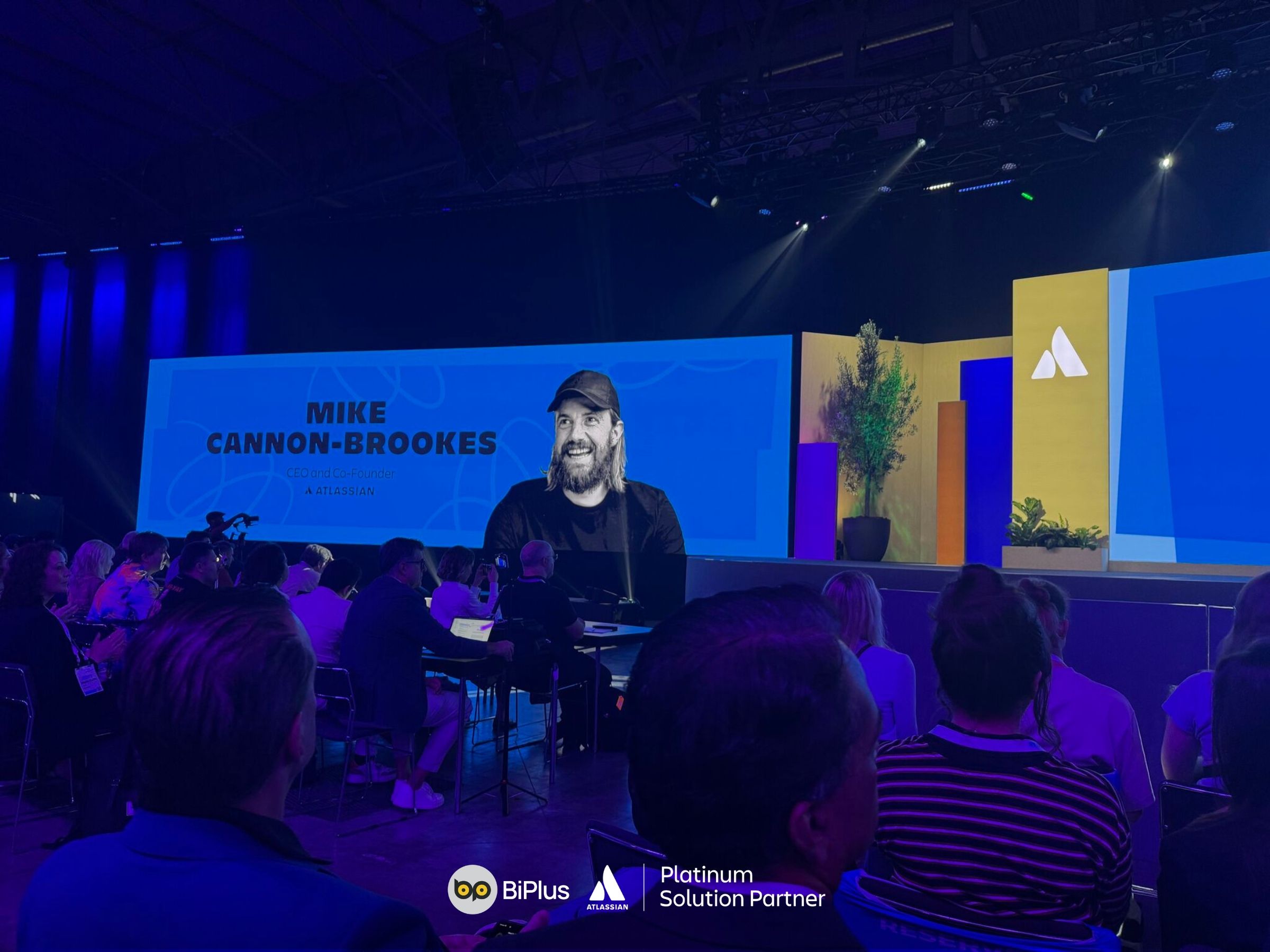
The Cloud Migration Imperative
The numbers tell a compelling story. More than 98% of Atlassian's European customers have already migrated to the cloud or begun their journey. Even more striking, 75% of the company's most complex and regulated customers have made the move. This isn't a gradual shift---it's a transformation happening at scale.
To support this momentum, Atlassian announced significant infrastructure enhancements. The company is raising the confluence user limit from 100,000 to 250,000 users per site, supporting 11 data residency regions across all major apps, and introducing Atlassian Isolated Cloud availability in any Atlassian-supported region, including Europe, starting in early 2026.
Perhaps most significant for enterprise customers is the introduction of Units---flexible, secure boundaries that can isolate sets of users, apps, and data across sites. Each unit has its own user directory, dedicated Teamwork Graph, and Rovo AI context, with no data sharing between units. This gives organizations unprecedented control over data residency, team collaboration, and AI governance while maintaining the power of the unified platform.
The Teamwork Graph: Your Organization's Memory
At the heart of Atlassian's AI revolution is the Teamwork Graph, the platform's data intelligence layer that tracks more than 100 billion objects and their connections. Each week, more than 1.5 billion objects are created or updated by third-party partners, creating a continuously evolving map of organizational knowledge.
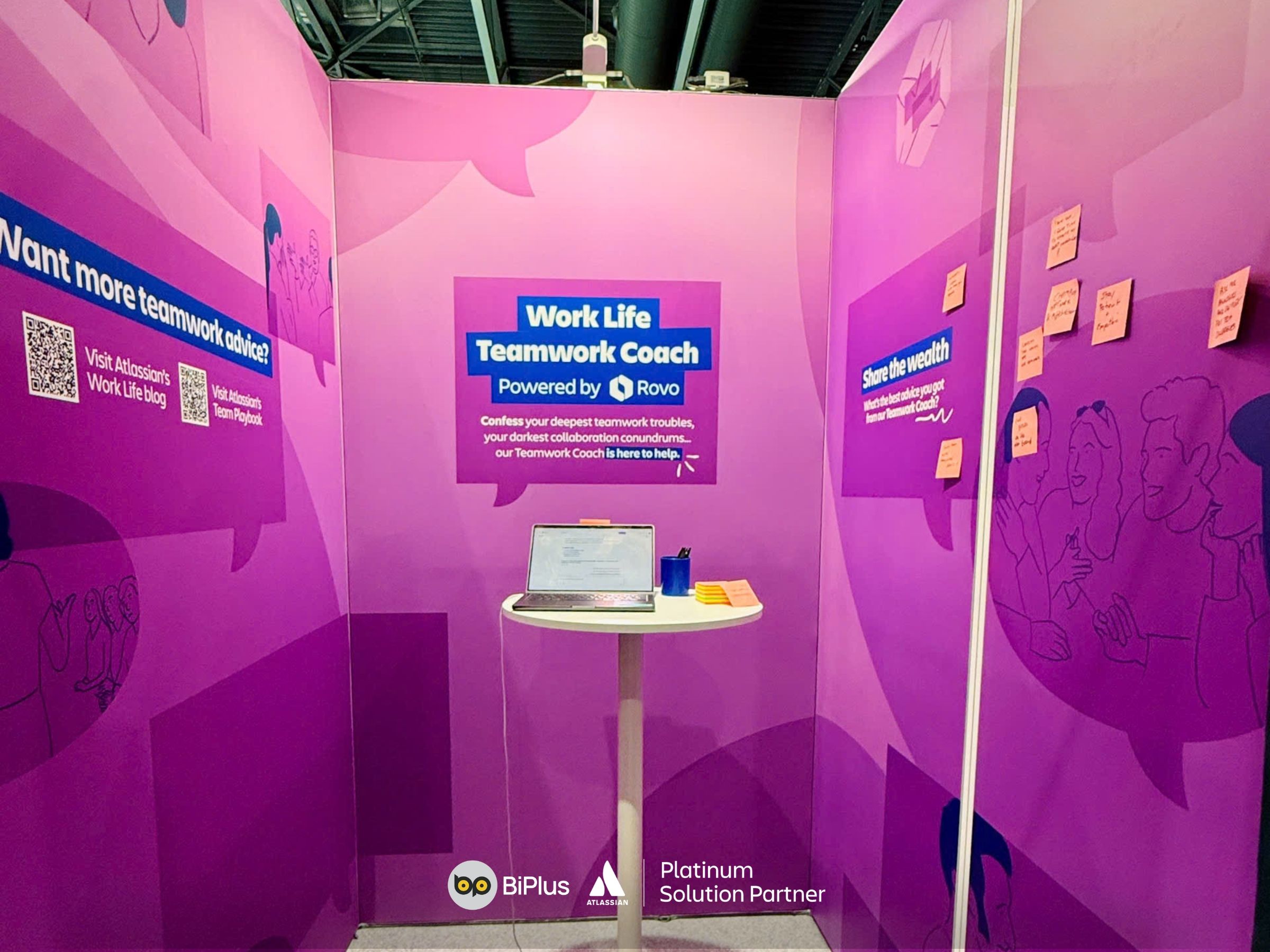
The Teamwork Graph is being opened up in three significant ways. First, through new Atlassian connectors for platforms like HubSpot and Databricks, plus marketplace connectors from partners. Second, through graph APIs for Forge, allowing developers to query the graph with custom business logic. Third, and most innovatively, through materialization---extending beyond pure knowledge to include physical and digital objects through the Assets app.
The demonstration of a museum managing art collections illustrated this power beautifully. Physical paintings, digital audio guides, glass cases, security systems, and lighting equipment all connected to knowledge objects like documents, projects, and teams through the single Teamwork Graph. When staff could ask Rovo in natural language whether an exhibition hall was ready for a specific painting and receive instant verification of all installation requirements, it showcased organizational intelligence at work.
Rovo: AI That Knows, Works, and Helps Everywhere
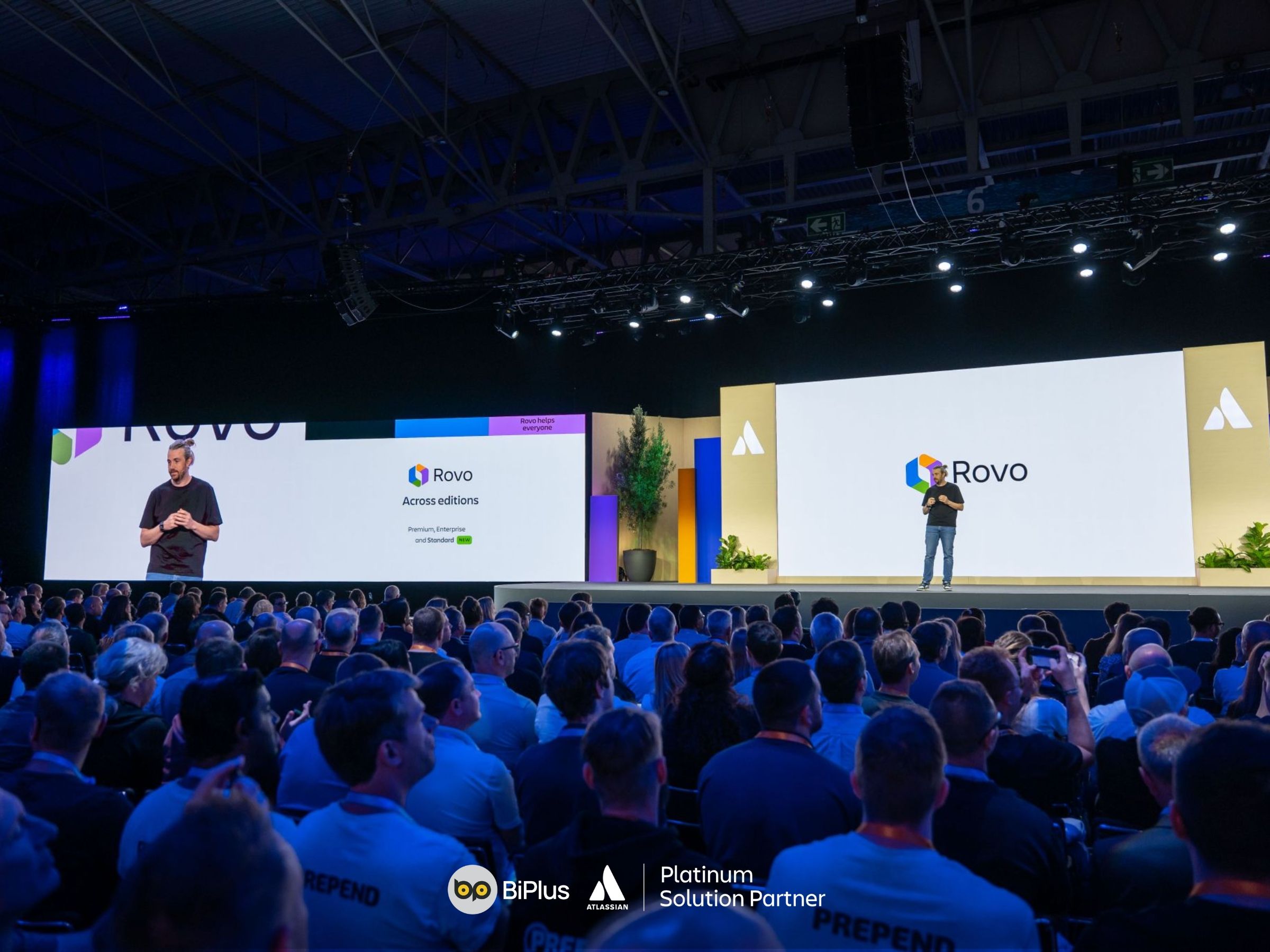
Atlassian's enterprise AI, Rovo, has seen explosive growth since its general availability launch. Monthly active users of Rovo Chat have grown more than 50-fold in just six months, while Rovo Search now powers more than 3 million users worldwide, with 78% reporting it's better than any previous search experience.
The expansion of Rovo availability marks a democratization of enterprise AI. Previously limited to premium and enterprise customers of select apps, Rovo is now rolling out across Jira Product Discovery, Focus, Talent, Bitbucket, and platform apps. More significantly, it's now available to all Standard edition customers at no extra cost, and a standalone edition will launch in early access in December for teams not yet using Jira or Confluence.
Rovo's capabilities continue to expand at an impressive pace. New features include file and image understanding, personal memory that adapts to individual preferences, canvas for collaborative editing of AI responses, web search skills for real-time information retrieval, and the ability to send emails and take actions across connected systems. Search performance has improved by 35% while relevance increased by 20% since January, and Rovo Search is becoming the default search experience in Jira, delivering a nearly 30% jump in relevance.
Rovo Studio: Building the Agentic Future
Rovo Studio represents Atlassian's vision for democratizing agent creation. The platform allows users to build custom AI agents using natural language, combining knowledge sources, skills, and automations without writing code. With 2.4 million workflows already running agents, Atlassian has established clear leadership in agentic workflow automation.
The go-to-market insights agent demonstration showcased the platform's power. By describing the desired outcome, users can create agents that search the web, pull customer data from HubSpot, analyze internal roadmaps, and publish findings to Confluence---all automatically. These agents can be triggered on schedules, respond to events, and take actions across the entire Atlassian ecosystem and third-party apps through an expanding skills library.
Perhaps most exciting for developers is the introduction of vibe coding for Forge apps. Using natural language prompts, Studio can generate fully functional Forge applications with custom interfaces, deploy them to Jira, and make them available to teams---all without writing a single line of code. The ability to continue refining these apps through conversation or by editing code directly represents true human-AI collaboration.
Teamwork Collection: The Collaboration Stack Evolves
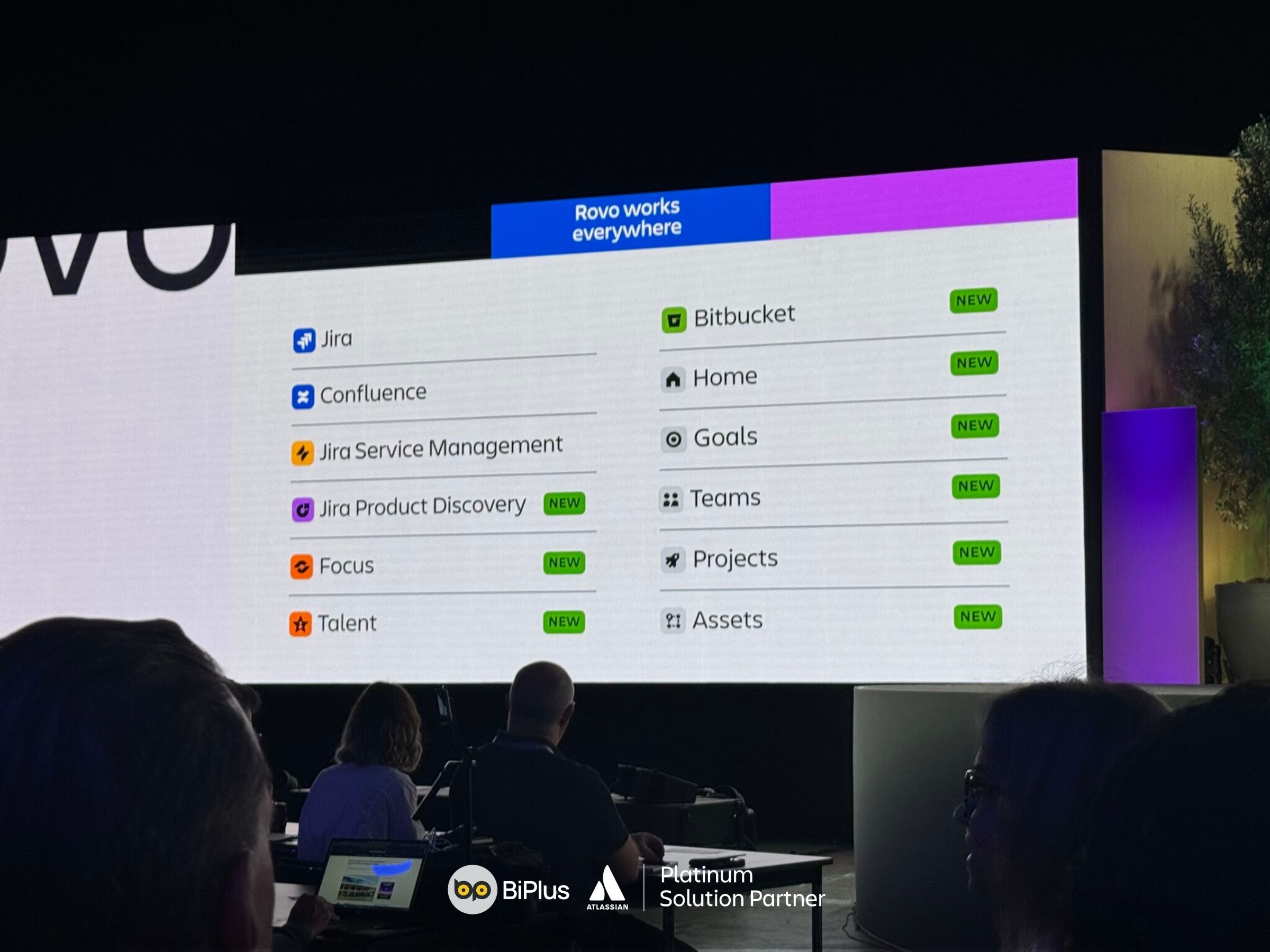
Sunshine's presentation on Teamwork Collection highlighted how Jira, Confluence, Loom, and Rovo form Atlassian's core collaboration stack. Major customers are adopting it at scale: a global auto manufacturer with 700,000 employees, a Silicon Valley AI pioneer expediting speed to market, and a European government agency maximizing technology ROI.
Confluence has undergone significant transformation. The platform is now twice as fast, with the ability to record Loom videos from any page or whiteboard and real-time avatars showing active collaborators. Create with Rovo introduces a new paradigm for content creation---users describe their desired outcome, attach relevant context, and receive fully structured pages with sections, action items, and recommendations in minutes rather than hours.
Audio Briefings turn any Confluence page into a podcast-style briefing, enabling content consumption while on the go. The demonstration of converting event planning documentation into natural audio showcased how teams can stay informed without being chained to their screens.
Jira has been reimagined with flexibility at its core. Projects are now called Jira Spaces to reflect their use for ongoing work rather than just time-bound projects. Teams can name work items according to their discipline---assets for designers, tasks for engineers, deliverables for marketers---creating a shared vocabulary that works across functions.
Software Collection: AI-Native Development
CTO Rajiv Rajan's announcement of the Software Collection marked a pivotal moment for development teams. Atlassian's acquisition of DX, the leader in developer productivity measurement, combines with RovoDev, Bitbucket, Pipelines, and Compass to create what the company calls the world's first AI-native software development lifecycle.
The results Atlassian achieved internally are remarkable: an 89% increase in pull requests per engineer and developer satisfaction rising from 49% to 83% in less than three years. DX enables organizations to measure these improvements objectively, identifying hotspots and tracking progress against industry benchmarks.
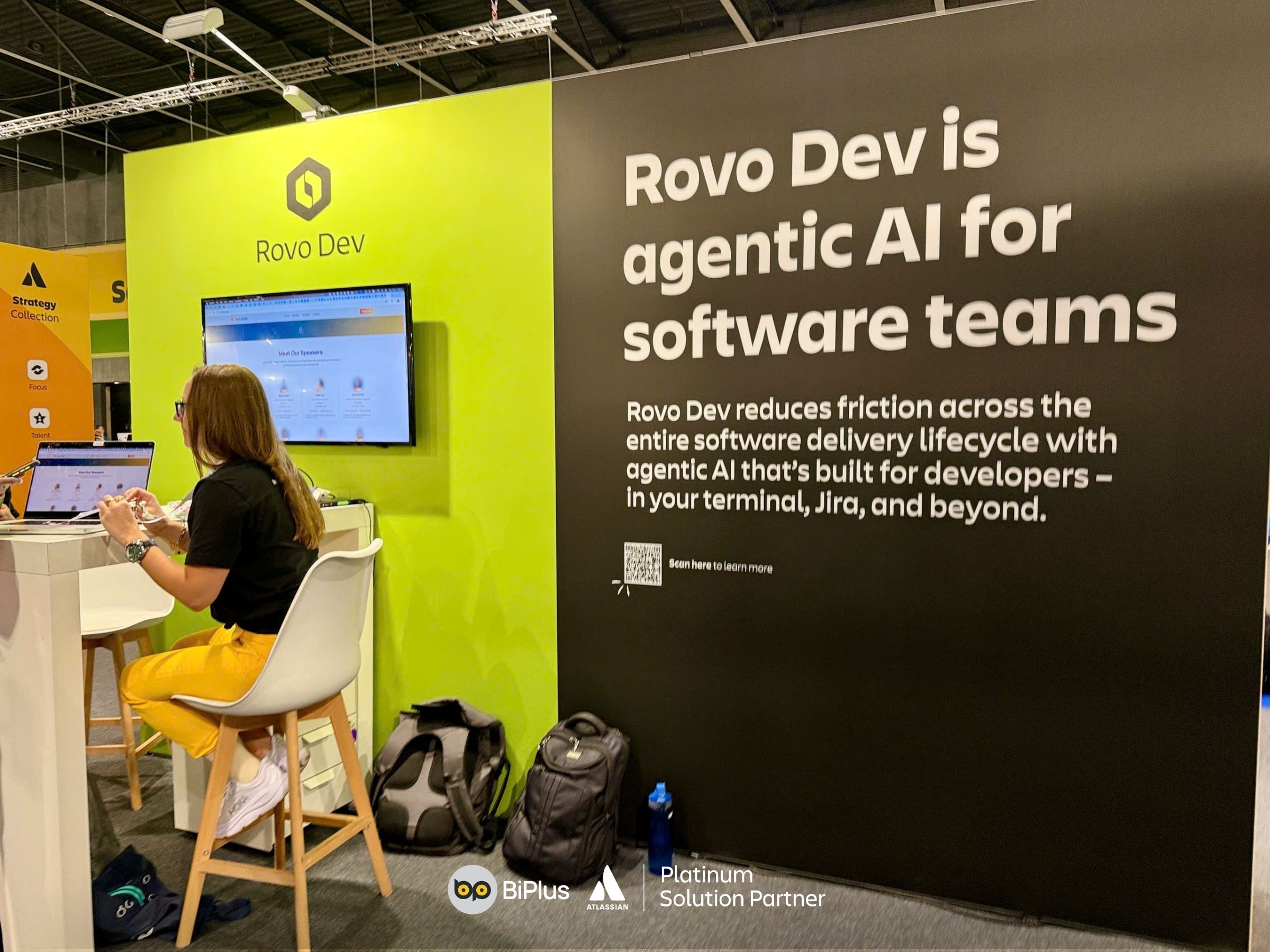
RovoDev, now generally available to all Atlassian customers, represents a new kind of development teammate. The demonstration showed it reading product requirements from Confluence, analyzing code, generating implementations with proper dependencies, running tests, and fixing errors autonomously. What would typically take weeks happened in hours.
RovoDev's impact extends across the development lifecycle. It provides context-aware code reviews, improving pull request cycle time by 45%. In CI/CD pipelines, it analyzes build failures and suggests automatic fixes. During production incidents, it groups alerts, creates incidents, surfaces related runbooks, and helps teams resolve issues in minutes rather than hours---one demonstration showed a 14-minute resolution for a major incident.
The validation of RovoDev's capabilities came through SWE-bench rankings, where Atlassian's agents ranked number one in solving real-world software tasks end-to-end. This isn't theoretical AI---it's proven capability in production environments.
Service Collection: Transforming Support and Operations
President Anu's presentation on service management began with a relatable frustration: the chaos of trying to get customer support during a travel emergency. This everyday experience highlighted the opportunity for AI to organize and manage support requests across channels.
The Customer Service Management app, now generally available after a successful 600-customer beta, showcases Rovo's unique advantage. While most AI agents access only knowledge bases, Rovo CSM accesses the entire Teamwork Graph. It can detect a customer's location, correlate it with ongoing incidents, understand that a fix is deploying, and provide proactive updates---all without human intervention.
For complex issues requiring human touch, Rovo CSM creates seamless handoffs. It pre-populates tickets with gathered information, fills missing details through conversation, and provides agents with full transcripts and customer data from CRM systems. When engineering fixes are needed, it creates Jira backlog items, and when fixes deploy, it automatically updates customers.
The feedback and evaluation system treats AI agents like human teammates. Support teams can review conversations, provide feedback on responses, and run evaluations against golden datasets to measure improvement objectively. This creates a continuous learning loop that makes agents progressively more effective.
Atlassian's internal results are impressive: 45,000 technical issues resolved, resolution time reduced from eight days to eight minutes, and a six-point increase in customer satisfaction scores. External customers like Leadership Circle have deployed CSM to three million customers and partners across 21 languages.
Jira Service Management continues its momentum with over 65,000 customers, including more than half the Fortune 500. A Forrester study measured tangible AI benefits, moving beyond buzzwords to actual business impact. RovoService creates personalized onboarding plans spanning HR, IT, facilities, and payroll teams, with autonomous task completion for systems access provisioning.
RovoOps introduces incident root cause analysis, using the Teamwork Graph to understand service dependencies and recent changes. Partnerships with Dynatrace, New Relic, and BigPanda integrate observability data, allowing on-call engineers to validate incident causes and take action without switching tools.
The Service Collection bundles JSM, the CSM app, and Assets with RovoService and RovoOps agents. Existing JSM customers receive the full collection with their current subscription, providing comprehensive service management capabilities under one unified solution.
The Bigger Picture: AI as Teammate, Not Tool
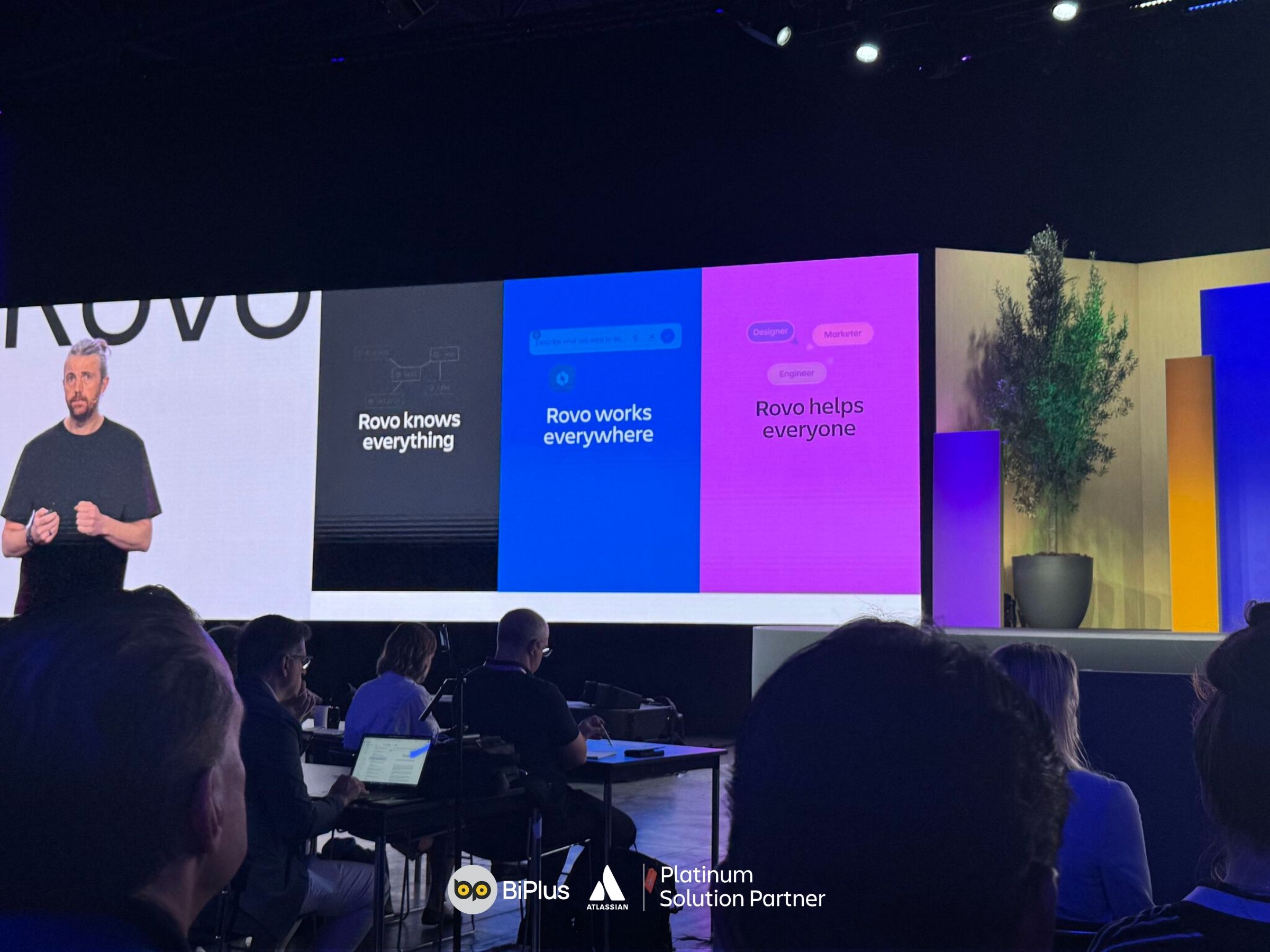
Throughout the keynote, a consistent philosophy emerged: Atlassian views AI not as a replacement for human work but as a true teammate that removes friction and keeps people in flow. This human-AI collaboration manifests in multiple ways---Canvas for collaborative editing with AI, feedback systems for training agents, and seamless handoffs between AI and human agents when complexity demands.
The introduction of third-party agents working inside Jira exemplifies this vision. The Canva agent demonstration showed work items being assigned directly to AI agents, which complete tasks autonomously and attach results without users leaving Jira. More partners are building agents to join teams in the coming months, creating an ecosystem where AI teammates specialize in different functions.
The scale of innovation announced at Team 25 Europe is staggering. From infrastructure enhancements supporting the largest enterprises to AI capabilities available at no extra cost for standard customers, from developer productivity tools achieving measurable results to service management transforming customer experience---Atlassian is executing on a comprehensive vision for AI-powered work.
The cloud migration Mike Cannon-Brooks described isn't just about moving servers. It's about accessing the Teamwork Graph, enabling Rovo across all workflows, connecting physical and digital assets, and joining the agentic future. The race has changed, and the rocket ships are launching. The question for organizations is no longer whether to make the journey, but how quickly they can get on board.













